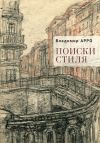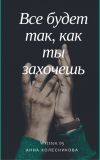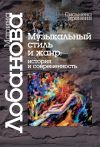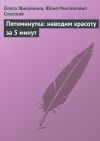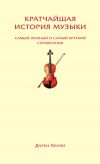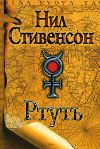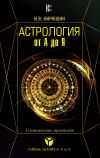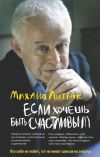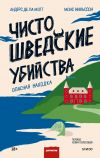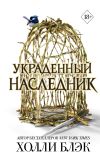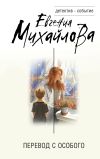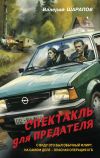Текст книги "Конец старинной музыки. История музыки, написанная исполнителем-аутентистом для XXI века"
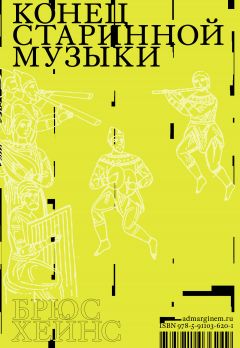
Автор книги: Брюс Хейнс
Жанр: Биографии и Мемуары, Публицистика
сообщить о неприемлемом содержимом
Текущая страница: 20 (всего у книги 21 страниц)
Филип и Тарускин готовы довольствоваться слишком малым и слишком поспешно.
Может быть, для вас этого и достаточно, джентльмены. Но для многих из нас всё только начинается; «долбежка сильной доли» и messa di voce – лишь отправная точка. Если вам невмоготу, не путайтесь под ногами. Есть немало музыкантов, исполняющих музыку эпохи барокко, но тщательно избегающих красноречивого стиля. Лично у меня на это не осталось времени, но я рад, что у нас есть счастливая возможность выбирать из множества подходов.
Историки по необходимости
Эжен Грин в своей книге «Барочное слово» говорит, что он стремился сделать для театра барокко то же, что сделали музыканты для Grand siècle [814]814
Великий век (франц.) – период в истории Франции, охватывающий правление трех первых Бурбонов: Генриха IV Великого (1589–1610), Людовика XIII Справедливого (1610–1643) и «короля-солнца» Людовика XIV (1643–1715) и некоторое время до и после него, примерно между 1589 и 1723 годом.
[Закрыть]. Эта достойная рассмотрения идея заключается в том, что HIP есть не что иное, как пример и утверждение целостной теории искусства – искусства риторики, искусства общения.
Хотя нам и нашим современникам может показаться это невероятным, но романтизм с его принципами еще слишком юн по сравнению с двадцатью пятью веками истории западной теории искусства, в которой господствовали принципы риторики. Романтизм как целостный художественный метод, разделяемый большинством критиков, возник не более чем два века назад [815]815
См. Abrams 1953:3.
[Закрыть]. Неудивительно, что многие его ценности кажутся нам столь же близкими, как наши задние карманы.
В широком контексте, возможно, восстановление риторики сделает для всех исполнительских искусств то же, что HIP сделало в музыке. В XIX веке романтизм развенчал и заменил риторику, поэтому может статься, что воскресшая риторика как главный принцип в искусстве предложит альтернативу романтизму. История выдвигает риторику в качестве основы общего стиля. В этом смысле Джуди Тарлинг абсолютно права, считая классическую литературу по декламации «наилучшим руководством по исполнительской практике» [816]816
Tarling 2004:III.
[Закрыть].
Заглядывая за горизонт времени
Вернуть утраченные исполнительские практики для музыкантов то же, что для актеров заговорить на иностранном языке так, чтобы зрители поверили, будто они его носители. «Можно выучиться произносить слова, но если не понимаешь их смысла и того, как извлекать этот смысл, всё будет топорно. <…> Хорошее произношение не спасет. Недостаточно даже сымитировать во всех деталях предыдущее великолепное представление. Внешнее подражание пустое, потому что не выражает сути» [817]817
Bowen 1996a:34.
[Закрыть]. По словам Хосе Боуэна, современные исследователи исполнительских практик в основном обращают внимание лишь на внешнее, на текстовые проблемы вроде разницы редакций или руководств по украшениям, «которых намного больше, чем работ по эстетике эпохи и тому, что считалось красивой игрой» [818]818
Ibid.: 27.
[Закрыть]. Аутентичное исполнение не сводится к простому переключению на другую технику, что явствует из старых записей. «Дело совсем не в том, чтобы мы просто решились применять „правила“, которые были у прежних исполнителей». «Чтобы играть „с подъездами“, как струнники во времена Элгара, нужно отказаться от современного представления о том, что „чистая“ игра – это игра со вкусом» [819]819
Philip 1992:235.
[Закрыть].
Роберт Филип отнюдь не обольщается по поводу старых записей:
Если попытки восстановить исполнительскую практику начала ХХ века и потерпят неудачу, представьте, насколько хуже было бы наше положение, если бы не оказалось записей этого периода и полагаться пришлось бы только на литературу, как в случае с музыкой более отдаленных веков. <…> По правде говоря, даже имея описание всех наиболее известных приемов [ХХ века: вибрато, портаменто, гибкости темпа, рубато, перепунктации. – Б. Х.], мы всё равно гадали бы, как ими пользовались практически, и, конечно, ошиблись бы. [820]820
Ibid.
[Закрыть]
Как видим, Филип убежден, что без записей не постичь ни характер темпов Элгара, ни портаменто Иоахима, ни ритмическую гибкость Бартока, ни рубато Рахманинова.
Всё верно, но это не имеет никакого отношения к тому, как на самом деле делается музыка. Есть другие способы открыть эти вещи: пробуя их и заставляя их работать. «Напойте мне несколько тактов, и я подыграю». Музыку возродят не книги [821]821
Цит. по: Wilson 1959:283.
[Закрыть]. С хорошими музыкантами не так уж много нужно, чтобы добиться многого.
Стремление к аутентичности
В завершение я хотел бы привести еще один тезис Р. Дж. Коллингвуда:
Историческое мышление – не более чем интерпретация всех доступных свидетельств с максимально критическим отношением. Оно не подразумевает раскрытия того, что было на самом деле, если «то, что было на самом деле», есть что-либо иное, чем «то, о чем свидетельствуют факты». Если о событии, которое некогда произошло, сегодня ничто не свидетельствует, то это событие не из мира истории; открыть его – не дело историка; и то, что он не знает о нем, не есть пробел в его знаниях. [822]822
Цит. по: Goldstein 1970:15; см.: Collingwood 1965:99.
[Закрыть]
Если историки столь беспристрастны, то вряд ли нам, музыкантам, стоит терзаться тем, «как было на самом деле». Простой здравый смысл подсказывает, что полное стилистическое совпадение с прошлым едва ли достижимо. И то, что мы никогда не сможем узнать, удалось ли нам его достичь, само по себе доказывает, сколь бессмысленно это занятие. Следовательно, аутентичное историческое исполнение не является нашей конечной целью.
Наша цель – попытаться достичь аутентичного исполнения. Мы никогда не узнаем, насколько мы приблизились к нему. Но мы знаем, что пытались. «К цели стоит стремиться, даже если ее невозможно достичь» [823]823
Sherman 1997:10.
[Закрыть], – говорил Бернард Шерман.
«Разумеется, нельзя в точности воссоздать звучание баховского оркестра, – пишет Бартольд Кёйкен, – но это не значит, что мы не можем попытаться. Теперь принято считать, что раз нельзя узнать, то зачем беспокоиться? На это я бы возразил, что путь интереснее цели» [824]824
Kuijken and Hook 2004:33.
[Закрыть].
Парадоксальным образом, у изобретателей seconda pratica в конце XVI века тоже не было надежды реально возродить музыку античности, тем не менее сама попытка со всей серьезностью приблизиться к аутентичности меняет нас и привычный мир вокруг, порождая что-то новое, прекрасное и интересное. К тому же выводу пришел после записи с Амстердамским барочным оркестром и Йо-Йо Ма (для записи ему пришлось вернуть свою виолончель Страдивари 1712 года к оригинальной настройке): «Всякий раз, когда пересекаешь грани знакомого тебе мира, а потом возвращаешься в этот привычный мир, ты понимаешь, что он изменился. Ни разу, выйдя в другой мир, я не ощутил, будто что-то утратил из нашей традиционной музыки. В конечном счете становишься более, а не менее свободным» [825]825
Из буклета к диску Simply Baroque (Sony SK 60680).
[Закрыть].
Мы знаем, что в итоге seconda pratica породила не музыку античности (к чему изначально стремилась), а nuove musiche [826]826
Новая музыка (итал.), название сборника вокальной музыки в новом монодическом стиле, составленного Джулио Каччини (1602).
[Закрыть], которой прежде не было. Стремясь к аутентичности, мы создаем нечто свое, абсолютно современное. Чего, кстати, нельзя достичь, оставаясь в сложившейся традиции. Со временем аутентизм успешно утвердился в качестве парадигмы, источника вдохновения, идеала, который, возможно, существует, а возможно, и нет. Для нас, музыкантов, важно не столько обретение аутентичности, сколько устремление к ней. В высшей степени разумной представляется мысль Гарри Хаскелла о том, что в аутентичности, как и в совершенстве или счастье, «лучше всего видеть идеал, которому надо следовать, а не цель, которой надо добиться» [827]827
Haskell 1988/1996:188.
[Закрыть]. (Если совершенство тяготеет к абсолюту, то счастье, судя по моему опыту, чаще всего неоднозначно, сиюминутно и непостоянно. То же можно сказать и об аутентичности.)
Не случилось ли так, что мы подсознательно использовали HIP просто как уловку – или психологическую установку – для того, чтобы создать новый стиль, в котором мы сегодня играем? Окрыленные и наивные, мы называем его «историческим стилем». Приходит ли вдохновение из иного места или времени, мы твердо знаем, что оно действенно, потому что мы заставляем его действовать.
Могли бы мы поступить иначе? Мы непритязательны, поэтому приписываем эту традицию нашим предшественникам. И раз уж она нам так по душе, единственное, в чем мы можем быть уверены, так это в том, что она должна быть «нашей».
Библиография
Принятые сокращения
AM Acta Musicologica
AMZ Allgemeine musikalische Zeitung
BJHM Basler Jahrbuch für historische Musikpraxis
EB Encyclopedia Britannica
EM Early Music
EML Bulletin Early Music Laboratory Bulletin
GPS Grazer Philosophische Studien
GSJ Galpin Society Journal
HDM The Harvard Dictionary of Music
ICMPC International Conference on Music Perception and Cognition
IRASM International Review of the Aesthetics and Sociology of Music
JAAC Journal of Aesthetics and Art Criticism
JAE Journal of Aesthetic Education
JAMS Journal of the American Musicological Society
JIDRS Journal of the International Double-Reed Society
JM Journal of Musicology
JMM The Refereed On-Line Journal for Multi-Disciplinary Research on Music and Meaning
MGG Die Musik in Geschichte und Gegenwart
MQ Musical Quarterly
NBA Neue Bach Ausgabe
NG 1 New Grove Dictionary, 1980
NG 2 New Grove Dictionary, 2001
PhPR Philosophy and Phenomenological Research
PPR Performance Practice Review
PRMA Proceedings of the Royal Musical Association
RMM Recorder and Music Magazine
Abrams M. H. The mirror and the lamp: Romantic theory and the critical tradition. Oxford University Press, 1953.
Ackerman J. Imitation // Antiquity and its interpreters / ed. A. Payne, A. Kuttner, and R. Smick. P. 9–16. Cambridge University Press, 2000.
Adams P. Artist vs. Critic: Debate with J. Shinners / Interview with A. Mayes / Source quotations on the ensemble Red Priest.
Agricola J. F. Anleitung zur Singkunst [1757]. Reprinted 1966; in Baird 1995.
Alperson P. On musical improvisation. // JAAC. 1984. 43. P. 17–30.
Arnheim R. On duplication // In The forger’s art: Forgery and the philosophy of art / ed. D. Dutton. University of California Press, 1983. P. 232–245.
Avison C. An essay on musical expression. 1753. Reprinted 1967.
Babbitt M. Who cares if you listen? The American composer speak // A historical anthology, 1770–1965 / ed. G. Chase (orig. appeared in 1958 in High Fidelity). Louisiana State University Press, 1966. P. 234–244.
Babitz S. A problem of rhythm in baroque music // MQ. 1952. 38. P. 533–565.
Babitz S. Concerning the length of time that every note must be held // Music Review. 1967. 28. P. 21–37.
Babitz S. Rhythmic freedom: A historical table in the light of wind instrument tonguing // EML. 1974. Bulletin 11 (entire issue).
Bach C. P. E. Versuch über die wahre Art das Clavier zu spielen. 1753–1762. Reprinted 1969.
Bach-Dokumente Supplement to Neue Bach Ausgabe / ed. W. Neumann and H.-J. Schulze. 3 vols. 1963, 1969, 1972.
Bacilly B. de. L’Art de bien chanter. 1668, 1679. Reprinted 1971.
Bailey D. Improvisation: Its nature and practice in music. Da Capo, 1992.
Baird J. C. Introduction to the art of singing by Johann Friedrich Agricola [annotated translation]. Cambridge University Press, 1995.
Baker D. Jazz improvisation: A comprehensive method of study for all players / 2d ed. Alfred, 1983.
Baker N. K., Paddison M. H., Scruton R. Expression // NG. 2001. 2, 8. P. 463–472.
Barnett D. Non-uniform slurring in eighteenth-century music: Accident or design? // Haydn Yearbook. 1978. 10. P. 179–199.
Barnett D. The art of gesture: The practices and principles of 18th century acting (with the assistance of Jeanette Massy-Westropp). Winter, 1987.
Bartel D. Musica Poetica: Musical-rhetorical figures in German baroque music. University of Nebraska Press, 1997.
Bazzana K. Glenn Gould: The performer in the work, a study in performance practice. Oxford University Press, 1997.
Beaussant P. Lully ou le musicien du soleil. Gallimard, 1992.
Bekker P. Klang und Eros, 1922.
Bergeron K., Bohlman P. V., eds. Disciplining music: Musicology and its canons. University of Chicago Press, 1992.
Bianconi L. Music in the seventeenth century / trans. D. Bryant. Cambridge University Press, 1987.
Bijlsma A. Bach, the fencing master: Reading aloud from the first three cello suites. 1998.
Bilson M. The Viennese fortepiano of the late 18th century // EM. 1980. 8/2. P. 158–162.
Blyth R. H. Zen in English literature and oriental classics. Dover, 1942.
Bollioud de Mermet L. De la corruption du goust dans la musique françoise. 1746. Reprinted: AMS, 1978.
Bonds M. E. Wordless rhetoric: Musical form and the metaphor of the oration. Harvard University Press, 1991.
Boorman S. The musical text // Rethinking music / ed. N. Cook and M. Everist. Oxford University Press, 1999. P. 403–423.
Borges J. L. Pierre Menard, author of Don Quixote [1939] // Borges J. L. Ficciones, Grove, 1962. P. 45–55.
Botstein L. Modernism // NG. 2001. 2, 16. P. 870.
Boult A. Peter Wadland interviews Sir Adrian C. Boult. April 11, 1977. Private interview (never broadcast or circulated). Courtesy of Teri Noel Towe
Bovet J. Les Poétiques de la voix dans le théâtre Classique / Ph.D. diss., Université de Montréal, 2003.
Bowen J. A. The history of remembered innovation: Tradition and its role in the relationship between musical works and their performances // JM. 1993. 11/2. P. 139–173. (1993a)
Bowen J. A. Mendelssohn, Berlioz and Wagner as conductors: The origins of the ideal of «fidelity to the composer» // PPR. 1993. 6. P. 77–88. (1993b)
Bowen J. A. Performance practice versus performance analysis: Why should performers study performance? // PPR. 1996. 9/1. P. 16–35.
Bowen J. A. Finding the music in musicology: Performance history and musical works // Rethinking music / ed. N. Cook and M. Everist. Oxford University Press, 1999. P. 424–451.
Bowen J. A. The rise of conducting // The Cambridge companion to conducting / ed. J. A. Bowen. Cambridge University Press, 2003. P. 93–113. (2003a)
Bowie A., Davies S., Goehr L., Sparshott F. E. Philosophy of music // NG. 2001. 2. 19. P. 601–631.
Boyd M. Arrangement // NG. 1980. 1. 1. P. 630.
Boyden D. D. The history of violin playing. Oxford University Press, 1965.
Braatz T. Matthäus-Passion BWV 244 conducted by Günther Ramin [2003] // Bach Cantatas Website, http://www.bach-cantatas.com (accessed 1 May 2006)
Brauner C. S. The Seconda Pratica, or the imperfections of the composer’s voice // Musical humanism and its legacy: Essays in honor of Claude V. Palisca / ed. N. K. Baker and B. R. Hanning. Pendragon, 1992. P. 195–212.
Brett P. Text, context, and the early music editor // In Authenticity and early music / ed. N. Kenyon. Oxford University Press, 1988. P. 83–114.
Brown C. Classical and Romantic performing practice. Oxford University Press, 1999.
Brown C. Articulation marks // NG. 2001. 2. 2. P. 89–92.
Brown C. Joachim’s violin playing and the performance of Brahms’s string music // Performing Brahms: Early evidence of performance style / ed. M. Musgrave and B. D. Sherman. Cambridge University Press, 2003. P. 48–98.
Brown H. M. Pedantry or Liberation? A sketch of the historical performance movement // Authenticity and early music / ed. N. Kenyon. Oxford University Press, 1988. P. 27–56.
Buelow G. J. Johann Mattheson and the invention of the Affektenlehre // New Mattheson studies / ed. by G. J. Buelow and H. J. Marx. Cambridge University Press, 1983. P. 393–407.
Buelow G. J., Hoyt P. A. Rhetoric and music // NG. 2002. 2. 21. P. 260–275.
Burgess G. V. The premier oboist of Europe: A portrait of Gustave Vogt. Scarecrow, 2003.
Burmeister J. Musica poetica. 1606. Reprinted in English trans., 1993.
Burney C. The present state of music in France and Italy, or The journal of a tour through those countries. 1771.
Burney C. The present state of music in Germany, the Netherlands, and the United Provinces. 2 vols. 1773.
Burnham S. Beethoven hero. Princeton University Press, 1995.
Burnham S. How music matters: Poetic content revisited // Rethinking music / ed. N. Cook and M. Everist. Oxford University Press, 1999. P. 193–216.
Burstyn S. In quest of the period ear // EM. 1997. P. 692–701.
Butt J. Bach interpretation: Articulation marks in primary sources of J. S. Bach. Cambridge University Press, 1990.
Butt J. Music education and the art of performance in the German baroque. Cambridge University Press, 1994.
Butt J. Bach recordings since 1980: A mirror of historical performance // Bach perspectives. 1999. 4 / ed. David Schulenberg. P. 181–198. (1999a)
Butt J. Review of Bartel 1997 // Early Music History. 1999. 18. P. 398–404. (1999b)
Butt J. Playing with history. Cambridge University Press, 2002.
Caccini G. Le nuove musiche. 1601.
Campbell M. Dolmetsch: The man and his work. University of Washington Press, 1975.
Campbell M. Arnold Dolmetsch // NG. 2001. 2. 7. P. 433–435.
Carrier D. Interpreting musical performances // Monist. 1983. 66. P. 202–212.
Carroll N. A philosophy of mass art. Oxford University Press, 1998.
Carter T. Artusi, Monteverdi, and the poetics of modern music // Musical humanism and its legacy: Essays in honor of Claude Palisca / ed. N. K. Baker and B. R. Hanning. Pendragon, 1992. P. 171–194.
Caswell A. B. The development of seventeenth-century French vocal ornamentation and its influence upon late Baroque ornamentation-practice / Ph. D. diss., University of Minnesota, 1964.
Chan M., Kassler J. C. Roger North’s The musical grammarian 1728. Cambridge University Press, 1990.
Chaouche S. L’Art du comédien: Déclamation et jeu scénique en France à l’age classique. 2001.
Chua D. K. L. Absolute music and the construction of meaning. Cambridge University Press, 1999.
Cohen J., Snitzer H. Reprise: The extraordinary revival of early music. Little, Brown, 1985.
Collingwood R. G. The principles of art. Oxford University Press, 1938.
Collingwood R. G. The idea of history. Clarendon Press, 1946.
Collingwood R. G. Essays in the philosophy of history / ed. William Debbins. 1965.
Collingwood R. G. An autobiography. Oxford University Press, 1978.
Collins M., et al. Improvisation: The Baroque period // NG. 2001. 2. 12. P. 102–117.
Cook N., Everist M. Analysing performance and performing analysis // Rethinking music, ed. N. Cook and M. Everist. Oxford University Press, 1999. P. 239–261.
Couperin F. L’Art de toucher le clavecin. 1717.
Cudworth C. «Baptist’s Vein» – French orchestral music and its in fluence, from 1650 to 1750 // PRMA. 1957. 83. P. 29–47.
Dadelsen G. von. «Es gibt keine schlechte Musik, es gibt nur schlechte Interpreten» // Musik, edition, interpretation: Gedenkschrift für Günter Henle / ed. M. Bente. Henle, 1980. P. 125–132.
Dahlhaus C. Foundations of music history (Grundlagen der Musikgeschichte) [1977]. Cambridge University Press, 1983.
Dahlhaus C., ed. Die Musik des 18. Jahrhunderts. Laaber-Verlag, 1985.
Dahlhaus C. The idea of absolute music. University of Chicago Press, 1989.
Dannreuther E. Musical ornamentation. 1893.
Danuser H. Interpretation // MGG. 1996. 4. P. 1053–1069.
Danuser H. Vortrag // MGG. 1998. 9. P. 1817–1836.
Darbellay É. Tradition and notation in baroque music // The oral and the literate in music / ed. Y. Tokumaru and O. Yamaguti. Academia Music. 1985. P. 57–68.
Darbellay É. C. P. E. Bach’s aesthetic as reflected in his notation // C. P. E. Bach Studies / ed. Stephen L. Clark. Oxford University Press, 1988. P. 43–63.
Dart T. The interpretation of music. Hutchinson’s University Library, 1954.
David H. T., Mendel A., eds. The Bach reader [1945] / 2nd ed., rev. Norton, 1966.
David W. Johann Sebastian Bach’s Orgeln. Wiederöffnung der Berliner Musikinstrumenten-Sammlung, 1951.
Davies S. Musical works and performances: A philosophical exploration. Oxford University Press, 2001.
Day T. A century of recorded music: Listening to musical history. Yale University Press, 2000.
Descartes R. The passions of the soul [1649] / trans. by Stephen Voss.
Diderot D. Paradoxe sur le comédien [1773] / introduction and notes by Jean M. Goulemot.
Dolmetsch A. The interpretation of the music of the XVII and XVIII centuries. Novello, 1915.
Donington R. The interpretation of early music. Faber and Faber, 1963.
Donington R. The present position of authenticity // PPR. 1989. 2. P. 117–125.
Douglas-Home J. Violet: The life and loves of Violet Gordon Woodhouse. Harvill Press, 1996.
Drabkin W. Motif // NG. 2001. 2. 17. P. 227–228.
Dreyfus L. Early music defended against its devotees: A theory of historical performance in the twentieth century // MQ. 1983. 69. P. 297–322.
Dreyfus L. Bach and the patterns of invention. Harvard University Press, 1996.
Druce D. Historical approaches to violin playing // Companion to contemporary musical thought / ed. J. Paynter et al. Routledge, 1992. Vol. 2. P. 993–1019.
Duckles V., et al. Musicology // NG. 1980. 1. 12. P. 836–862.
Duckles V., with Janet Page and Lydia Goehr Musicology: Performance practice, aesthetics and criticism // NG. 2001. 2. 17. P. 503–504.
Duffin R. W. Performance practice: que me veux-tu? (What do you want from me?) [1995] / Online article at http://music.cwru.edu/duffin/EMPP/ppqmvt/p1.html (accessed 1 November 2004)
Dulak M. The quiet metamorphosis of «Early Music» // Repercussions. 1993. 2. P. 2, 39–61.
Dunsby J. Performance // NG. 2001. 2. 19. P. 346–349.
Dürr A. Kritischer Bericht for the Magnificat // NBA. 1955. 2/3.
Dutton D., ed. The forger’s art: Forgery and the philosophy of art. University of California Press, 1983.
Edidin A. Playing Bach his way: Historical authenticity, personal authenticity, and the performance of classical music // JAE. 1998. 32/4. P. 79–91.
Ellis A. J. On the history of musical pitch // Journal of the Society of Arts. March 5, 1880 (repr. 1968). P. 293–336.
Ellison M. B. The Comparaison de la musique italienne et de la musique françoise of Le Cerf de la Vieville: An annotated translation of the first four dialogues. Ph.D. diss., University of Miami. 1973
Encyclopaedia Britannica (EB) [1768–1771] / 2nd ed., 1790–1797; 3rd ed., 1803; 15th ed., 1974.
Engramelle M. D. J. La Tonotechnie. 1775.
Erauw W. Canon formation: Some more reflections on Lydia Goehr’s Imaginary museum of musical works // AM. 1998. 70. P. 109–115.
Everist M. Reception theories, canonic discourses, and musical value // Rethinking music / ed. N. Cook and M. Everist. Oxford University Press, 1999. P. 378–402.
Ewen D. The man with the baton. Thomas Y. Crowell Co, 1936.
Fabian D. The meaning of authenticity and the Early Music movement – a historical review // International Review of the Aesthetics and Sociology of Music. 2001. 32. P. 153–167.
Fabian D. Bach performance practice, 1945–1975: A comprehensive review of sound recordings and literature. Ashgate, 2003.
Fabian D., Schubert E. Is there only one way of being expressive? // ICMPC. 2002. 7. P. 112–115.
Feld S. Aesthetics as iconicity of style, or «lift-up-over sounding»: Getting into the Kaluli groove // Yearbook for Traditional Music. 1988. 20. P. 74–113.
Finnegan R. The relation between composition and performance: Three alternative modes // The oral and the literate in music / ed. Y. Tokumaru and O. Yamaguti. Academia Music1986). P. 73–87.
Finscher L. Historisch getreue Interpretation – Möglichkeiten und Probleme // Alte Musik in unsere Zeit / ed. W. Wiora. Kassel, 1968. P. 25–34.
Fisher J. A., Potter J. Technology, appreciation, and the historical view of art // JAAC. 1997. 55. P. 169–185.
Forchert A. Musik und Rhetorik im Barock // Schütz Jahrbuch 1985–1986. 7–8. P. 5–21.
Fortune N. Sprezzatura // NG. 2001. 2. 24. P. 223–224. (2001a)
Fortune N. Air.” NG. 2001. 2. 1. P. 252–253. (2001b)
Frescobaldi G. Preface // Toccate e partite d’intavolatura di cimbalo. 1615.
Fried M. Courbet’s realism. University of Chicago Press, 1990.
Friedländer M. J. On art and connoisseurship. Cassirer, 1942.
Frisch W. In search of Brahms’s First Symphony: Steinbach, the Meiningen tradition, and the recordings // Performing Brahms: Early evidence of performance style / ed. M. Musgrave and B. D. Sherman. Cambridge University Press, 2003. P. 277–301.
Fuller D. Dotting, the ‘French style’ and Frederick Neumann’s counter-reformation // EM. 1977. 5/4. P. 517–543.
Fuller D. Mechanical musical instruments as a source for the study of «notes inégales» // Bulletin of the Musical Box Society International. Summer 1974 (reprint 1979 includes recording).
Fuller D. The performer as composer // Performance practice: Music after 1600 / ed. H. M. Brown and S. Sadie. Norton, 1989. P. 117–146.
Gay P. The naked heart. The bourgeois experience: Victoria to Freud. Vol. 4. Oxford University Press, 1995.
Geminiani F. The art of playing on the violin. 1751.
Godlovitch S. Authentic performance // Monist. 1988. 71. P. 258–277.
Goehr L. The imaginary museum of musical works: An essay in the philosophy of music. Oxford University Press, 1992.
Goehr L., Sparshott F. Philosophy of music // NG. 2001. 2. 19. P. 601–631.
Goldstein L. J. Collingwood’s theory of historical knowing // History and Theory. 1970. 9. P. 3–36.
Golomb U. The spectrum of authenticism / Unpublished manuscript. 1991–1993.
Golomb U. Modernism, rhetoric and (de-)personalisation in the early music movement // Seminar paper / King’s College, London, August 1998.
Golomb U. Interview with Ton Koopman. 2003 // Goldberg Magazine (https://www.bach-cantatas.com/Articles/Koopman-Golomb.pdf – проверено 03.07.2022).
Golomb U. Expression and meaning in Bach performance and reception: An examination of the B minor mass on record / Ph. D. diss., King’s College, Cambridge, 2004 (текст доступен по ссылке: http://edocs.ub.uni-frankfurt.de/volltexte/2005/3077/).
Golomb U. Rhetoric and gesture in performances of the First Kyrie from Bach’s Mass in B minor (BWV 232) [2005] // JMM: The Refereed On-Line Journal for Multi-Disciplinary Research on Music and Meaning (http://www.musicandmeaning.net/issues/showArticle.php?artID=3.4 – проверено в январе 2005 года).
Gombrich E. H. The style all’antica: imitation and assimilation // Norm and form: Studies in the art of the Renaissance. University of Chicago Press, 1966.
Goodman N. Languages of art: An approach to a theory of symbols. Bobbs-Merrill, 1976.
Goodman N. Art and authenticity // The forger’s art: Forgery and the philosophy of art / ed. D. Dutton. University of California Press, 1983. P. 93–114.
Goodman N. Authenticity // The dictionary of art. 1995. 2. P. 834–835.
Grant P. Identification vs. transcription in cataloguing / Unpublished commentary. 2003.
Green E. La Parole baroque. Desclée de Brouwer, 2001.
Grout D. J. A History of Western Music [1960]. W. W. Norton, 2010.
Hailperin P. Copy – reconstruction – musical instrument [1997] // A time of questioning: Proceedings of the international early double-reed symposium, Utrecht, 1994 / ed. D. Lasocki. P. 183–186.
Handschin J. Die alte Musik als Gegenwartsproblem [1927] // Gedenkschrift Jacques Handschin: Aufsätze und Bibliographie / ed. Hans Oesch. Haupt, 1957. P. 338–341.
Hanning B. R. Monteverdi’s three genera: A study in terminology // Musical humanism and its legacy: Essays in honor of Claude V. Palisca / ed. N. K. Baker and B. R. Hanning. Pendragon, 1992. P. 145–170.
Harnoncourt N. Baroque music today: Music as speech [Musik als Klangrede, Salzburg, 1982]. Amadeus Press, 1988.
Harnoncourt N. The musical dialogue: Thoughts on Monteverdi, Bach and Mozart. Amadeus Press, 1989.
Harris E. T. Voices // Performance practice: Music after 1600 / ed. H. M. Brown and S. Sadie. Norton, 1989. P. 97–116.
Harriss E. C. Johann Mattheson’s Der Vollkommene Capellmeister: A revised translation with critical commentary. University Microfilms, 1981.
Haskell H. The early music revival: A history. Dover, 1988/1996.
Haskell H. Early music // NG. 2001. 2. 7. P. 831–834.
Haspels J. J. L. Automatic musical instruments: Their mechanics and their music, 1580–1820. Zwolle, 1987.
Hatten R. S. Interpreting musical gestures, topics, and tropes: Mozart, Beethoven, Schubert. Indiana University Press, 2004.
Hawkins J. A general history of the science and practice of music [1776]. Reprinted: Dover, 1875, 1963, 1969.
Haynes B. «The decline of the recorder in the 18th century»: A further scrutiny // RMM. 1968. 2. P. 240–242.
Haynes B. The baroque recorder: A comparison with its modern counterpart // American Recorder, 1969. 11. P. 3–8.
Haynes B. Beyond temperament: Non-keyboard intonation in the 17th and 18th centuries // EM. 1991. 19. P. 357–381.
Haynes B. Das Fingervibrato (Flattement) auf Holzblasinstrumenten im 17., 18. und 19. Jahrhundert. 2 parts // Tibia. 1997. 2. P. 401–407; 1997. 3. P. 481–487. (1997a)
Haynes B. Playing «short» high notes on the hautboy // JIDRS. 25. P. 115–118. (1997b)
Haynes B. The eloquent oboe: A history of the hautboy, 1640–1760. Oxford University Press, 2001.
Haynes B. A history of performing pitch: The story of «A». 2002.
Hewitt S. Method for oboe / Self-published, 1966.
Heyerdahl T. Kon-Tiki: Across the Pacific by raft. Rand McNally. 1951.
Higgins P. The Apotheosis of Josquin des Prez and other mythologies of musical genius // JAMS. 2004. 57. 3. P. 443–510.
Hill K., Ploger M. The craft of musical communication, Part 2. 2005 (доступно по ссылке: http://www.musicalratio.com/onaffect.html – проверено 31.12.2006).
Hill R. Overcoming Romanticism: On the modernization of 20th century performance practice // Music and performance during the Weimar Republic / ed. B. R. Gilliam. Cambridge University Press, 1994. P. 37–58.
Hill R. Spohr in Berlin oder: Musikgeschichte als Aufführungspraxisgeschichte // Jahrbuch des Staatlichen Instituts für Musikforschung Preussischer Kulturbesitz. 2000. P. 46–56.
Hindemith P. Johann Sebastian Bach. Ein verpflichtendes Erbe. Privately printed, 1950.
Hobsbawm E. Inventing traditions // The invention of tradition / ed. E. Hobsbawm and T. Ranger. Cambridge University Press, 1983. P. 1–14.
Hoffmann E. T. A. Schriften zur Musik: Nachlese / ed. F. Schnapp. Winkler-Verlag, 1963.
Hogwood C. Handel. Thames & Hudson, 1984.
Holoman K. Winter R., Page J. Performing practice, the 19th century // NG. 2001. 2. 19. P. 374–377.
Horowitz J. Understanding Toscanini: How he became an American culture-god and helped create a new audience for old music. Knopf, 1987.
Horowitz J. The Post-classical predicament: Essays on music and society. Northwestern University Press, 1995.
Hospers J. Philosophy of art // The New Encyclopaedia Britannica / 15th ed. 1974. Vol. 25. P. 694–710.
Houle G. Meter in music. 1600–1800. Indiana University Press. 1987.
Howlett A. J. Das Utrechter Festival. Alte Musik – Die Bedrohung von innen – Die Philister vor den Toren. Musik & Ästhetik. 2000. 13. P. 104–113.
Hunter M. «To play as if from the soul of the composer»: The idea of the performer in early Romantic aesthetics // JAMS. 2005. 58/2. P. 357–398.
Правообладателям!
Это произведение, предположительно, находится в статусе 'public domain'. Если это не так и размещение материала нарушает чьи-либо права, то сообщите нам об этом.

